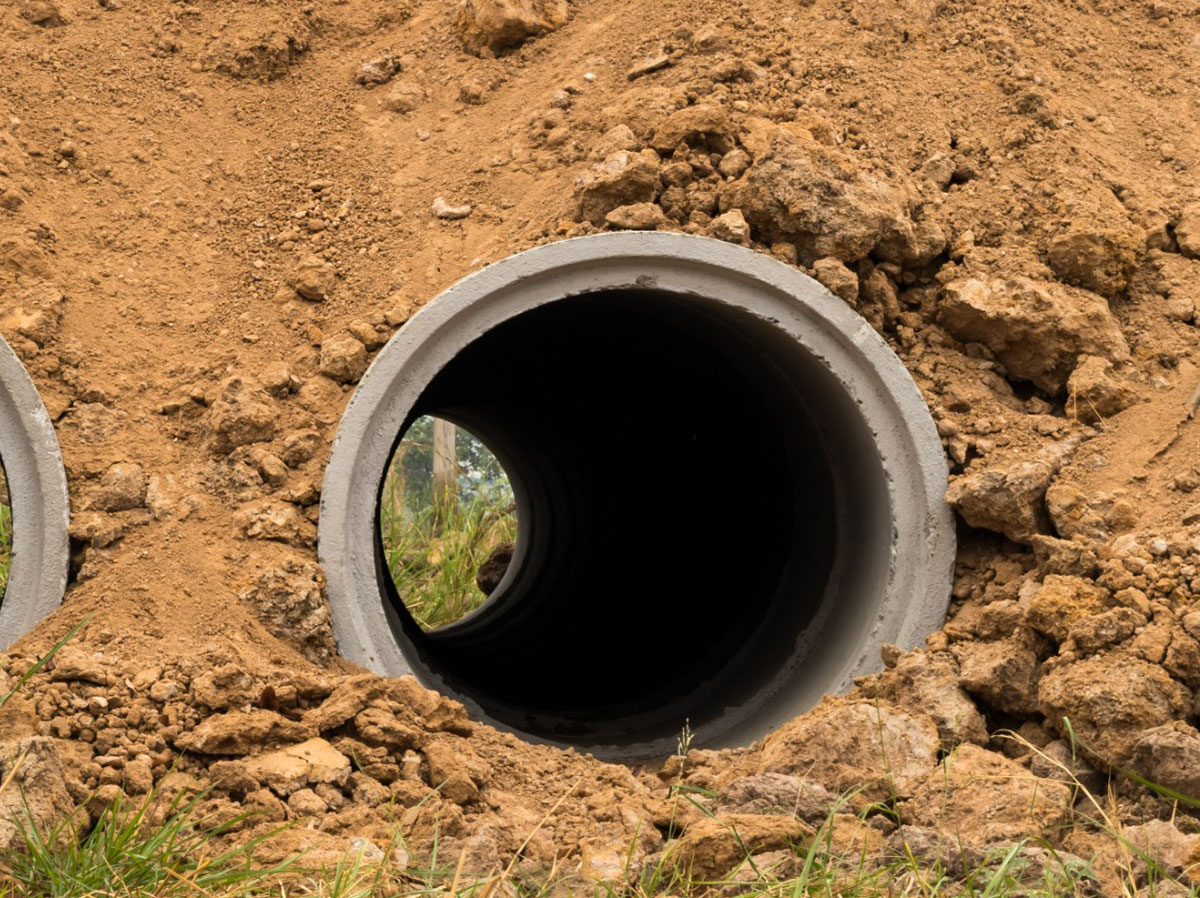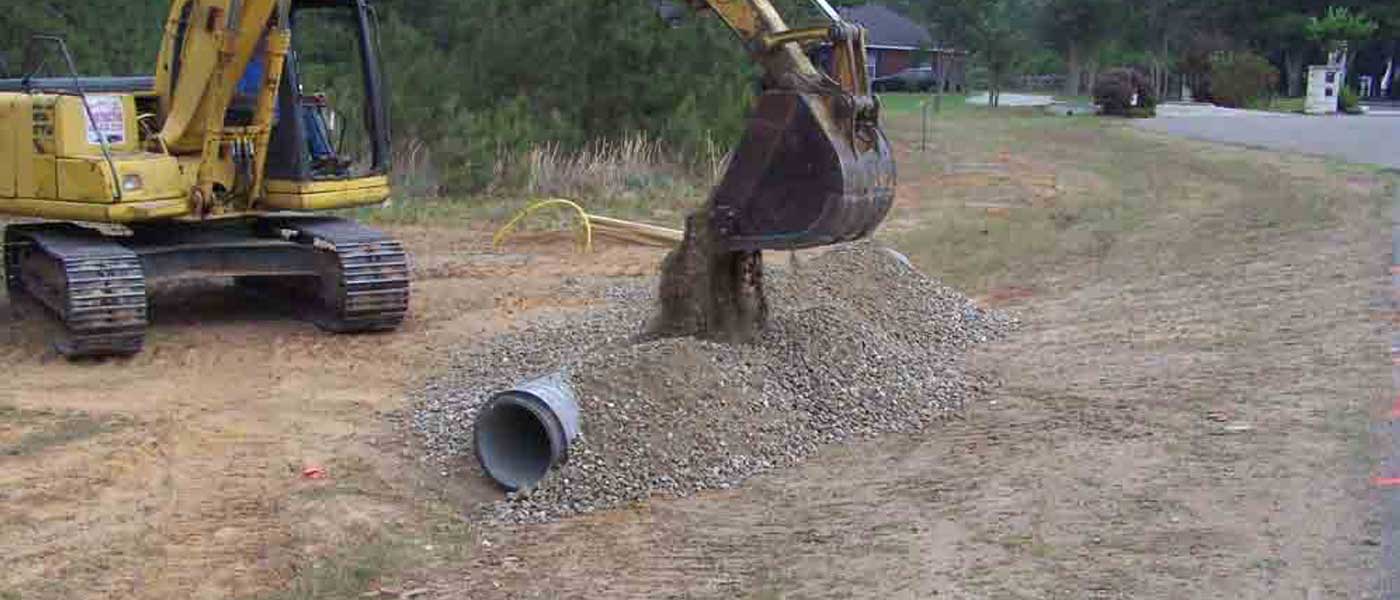Comprehensive Culvert Installation for Effective Drainage
Comprehensive Culvert Installation for Effective Drainage
Blog Article
Culvert Setup Made Easy: Step-by-Step Guide for Success
Setting up culverts might look like a simple job, yet making certain an effective outcome requires cautious preparation and execution. From selecting the suitable culvert size to incorporating correct water drainage actions, each action in the installation process plays an important duty in the capability and longevity of the culvert system. By following a methodical method and taking note of key details, the setup can proceed smoothly, lessening prospective issues down the line. Stay tuned to uncover the important actions and considerations that can make culvert setup a seamless and successful endeavor.
Selecting the Right Culvert Dimension
Choosing the proper culvert dimension is vital for making sure efficient water circulation and structural honesty in culvert setup projects - Pad Construction. The dimension of the culvert directly affects the circulation capability of water through the framework. A culvert that is too little can bring about flooding and overflow, while one that is as well huge may result in reduced water rate, potentially causing debris buildup and obstructions
To figure out the appropriate culvert size, variables such as the watershed area, optimal circulation prices, and hydraulic effectiveness requirement to be carefully taken into consideration. Estimations based upon these parameters assist in picking a size that can effectively handle the anticipated water quantity while minimizing the danger of obstructions and structural failing.
It is important to seek advice from engineering guidelines and standards to ensure that the selected culvert dimension fulfills the project demands and regional laws (Pad Construction). By selecting the best culvert size, job managers can enhance water circulation, protect against potential issues, and improve the overall efficiency and durability of the culvert installment
Preparing the Installment Website
Efficient culvert installment requires thorough preparation of the installation website to guarantee optimal architectural support and capability. Before starting the setup process, it is critical to clear the website of any type of particles, plants, or blockages that can hamper the culvert's placement.
Additionally, it is essential to take into consideration factors such as soil make-up, groundwater degrees, and ecological influences when preparing the installation site. Carrying out a detailed site assessment can help identify any type of possible obstacles or risks that might impact the culvert's efficiency. By putting in the time to prepare the installation site properly, you can help guarantee a successful culvert installation that satisfies structural requirements and ensures long-term functionality.
Placing the Culvert Correctly

The grade at which the culvert is positioned is crucial for maintaining a correct incline for water circulation. Furthermore, the culvert needs to be oriented properly to guarantee that the inlet and outlet are in the correct areas. Pad Construction.
Backfilling and Condensing the Dirt
Appropriate backfilling and compaction of the soil around the culvert is necessary to ensure security and stop possible concerns in the future. As soon as the culvert is properly placed, the following vital step is to backfill the location around it with appropriate material. The backfill product ought to be devoid of over at this website rocks, particles, and raw material to prevent damage to the culvert. It is advised to utilize granular product such as sand or crushed rock for backfilling, as it provides good water drainage and compaction buildings.
After placing the backfill material, it is crucial to portable it in layers of uniform thickness. Making use of a compactor or a mechanical tamper, small the soil delicately to stay clear of damaging the culvert. Compaction assists in reducing the possibilities of negotiation and makes sure consistent assistance around the culvert. It is vital to small the dirt equally on all sides of the culvert to maintain its structural integrity.
Proper backfilling and compaction not only offer stability to the culvert however additionally aid in preventing dirt disintegration and keeping the long life of the culvert system.
Ensuring Proper Drain Integration
Incorporating reliable water drainage remedies plays a crucial role in the general functionality and longevity of culvert installations. Proper drainage integration is essential for handling water flow, preventing disintegration, and making certain the architectural stability of the culvert system. To accomplish this, it is crucial to design a comprehensive drainage strategy that takes into consideration aspects such as the volume of water anticipated, the topography of the area, and the kind of dirt present.

Additionally, incorporating features like disintegration control actions, such as riprap or plants, can even more improve the performance of the drainage system. By carefully preparing and carrying out these drain solutions, culvert setups can operate successfully and withstand the test of time.
Conclusion
In verdict, correct culvert installment is crucial for maintaining anchor efficient drainage systems. By picking the ideal culvert size, preparing the installation site, positioning the culvert appropriately, backfilling and condensing the dirt, and making sure proper water drainage assimilation, success can be accomplished. Complying with these steps will certainly aid ensure the durability and efficiency of the culvert, ultimately adding to the total success of the drain system.
Report this page